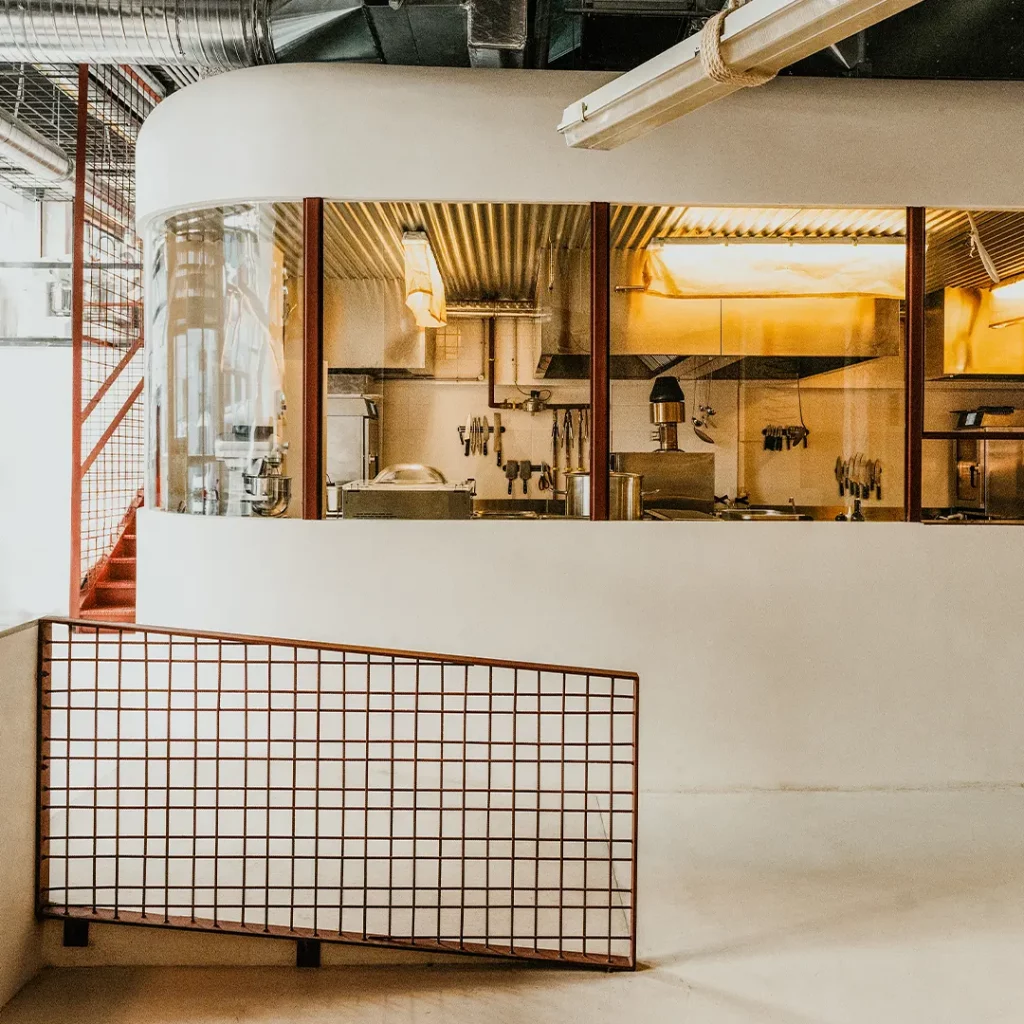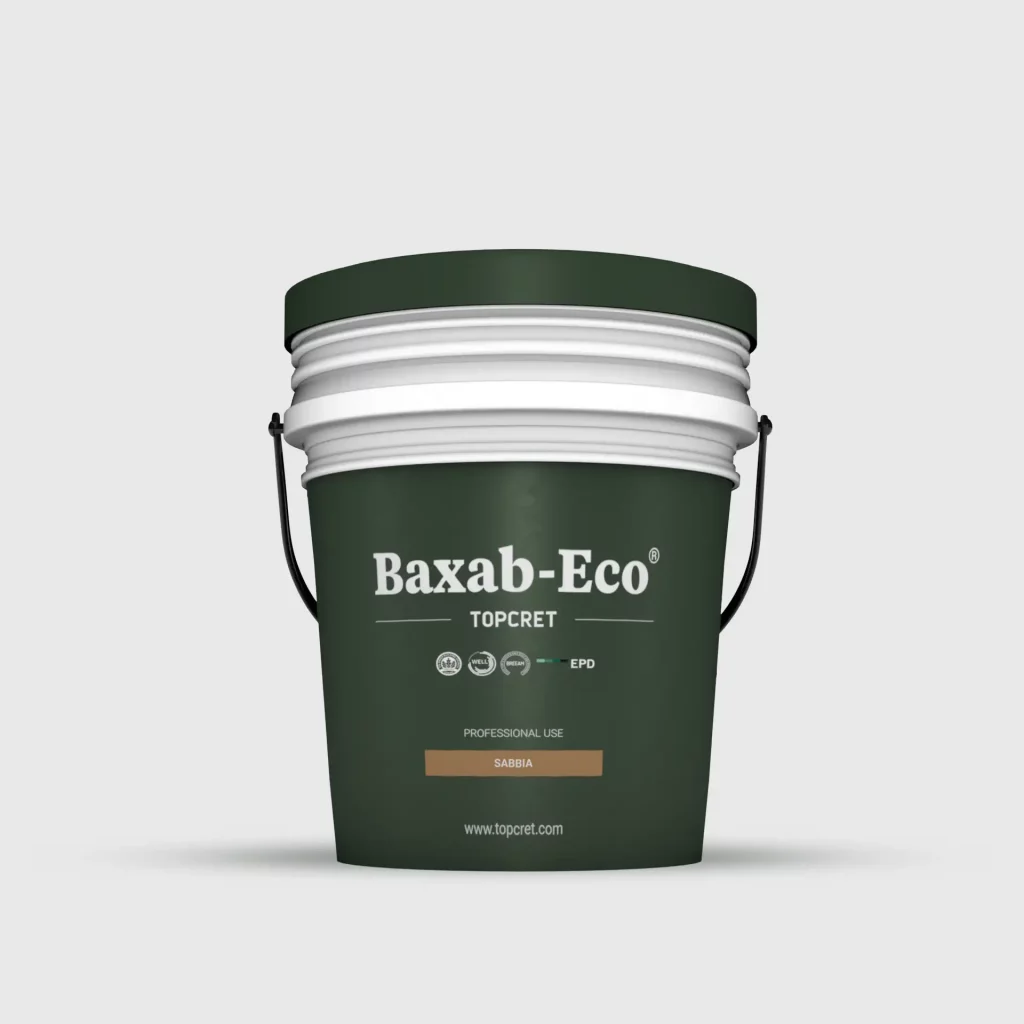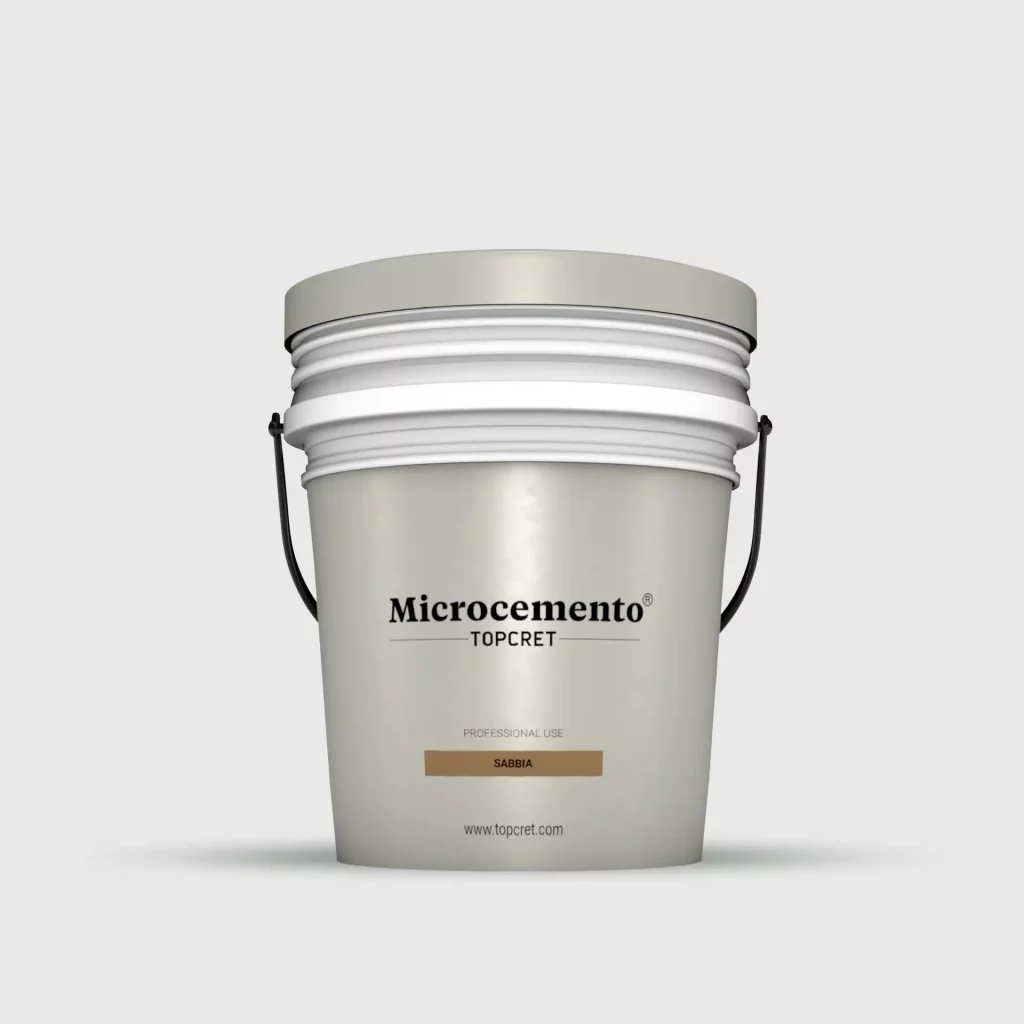TOPCRET MICROCEMENT
Eco Cement:
The Future of Sustainable Construction
What is Eco Cement?
As the world becomes more aware of the impact of human activities on the environment, there is a growing need for sustainable alternatives in every industry. The construction industry is no exception, and that’s where eco cement comes in.
Eco cement, also known as ecological microcement, is a sustainable and environmentally-friendly alternative to traditional concrete. It is made by combining cement with natural materials such as water, resins, and minerals.
Unlike traditional concrete, eco cement is free of harmful volatile organic compounds (VOCs) and is water-based, making it an ideal choice for green building projects.

Reducing Carbon Footprint with Eco Cement
Concrete is one of the most widely used building materials in the world, but it also has a significant environmental impact. Traditional concrete production is responsible for 8% of global CO2 emissions, making it one of the biggest contributors to climate change. Eco cement, on the other hand, has a much lower carbon footprint, making it a more sustainable choice for construction projects.
The Eco-Friendly Alternative to Traditional Cement
Eco cement is the perfect solution for builders looking to reduce their environmental impact. It is a sustainable and eco-friendly alternative to traditional cement that can be used in a variety of building applications. Eco cement is not only environmentally friendly, but it is also durable and long-lasting, making it a cost-effective choice for builders.
How Eco Cement Helps Reduce Carbon Emissions
Eco cement is a sustainable and environmentally-friendly alternative to traditional cement. By using eco cement instead of traditional cement, builders can reduce their carbon emissions and make their construction projects more sustainable. Eco cement is made using natural materials, reducing the environmental impact of construction projects.
The Benefits of Using Eco Cement for Sustainable Construction
Using eco cement has several benefits for sustainable construction projects. It is durable, long-lasting, and environmentally-friendly. Eco cement is also waterproof and breathable, making it an ideal choice for building facades, walls, and floors. It is a versatile material that can be used in a variety of applications, from residential to commercial buildings.
Measuring the Environmental Impact of Eco Cement
At Topcret, we are committed to reducing our environmental impact. That's why we have created Baxab Eco, a sustainable and eco-friendly alternative to traditional cement. Baxab Eco is made using recycled materials, reducing waste and helping to create a more sustainable future.
Eco cement offers a sustainable and environmentally-friendly alternative to traditional cement that can be used in a variety of building applications.
Benefits of Using Baxab Eco
Baxab Eco has several benefits for sustainable construction projects. It is durable, long-lasting, and environmentally-friendly. Baxab Eco is also waterproof and breathable, making it an ideal choice for building facades, walls, and floors.

Topcret's EcoCement: Another Eco-Friendly Alternative
At Topcret, we are committed to creating sustainable and eco-friendly building materials. That’s why we have created EcoCement, another sustainable alternative to traditional cement. EcoCement is made using recycled materials and has a lower carbon footprint than traditional cement.
How EcoCement Reduces Carbon Footprint
EcoCement has a lower carbon footprint than traditional cement. It is made using recycled materials, reducing waste and creating a more sustainable future. EcoCement is also more energy-efficient than traditional cement, reducing the amount of energy needed to manufacture it.


Applications of EcoCement
EcoCement is a versatile material that can be used in a variety of applications.
It has been used in both residential and commercial projects, including flooring, walls, countertops, and even outdoor landscaping features.
One of the standout applications is microcement flooring. Given its sustainable properties, EcoCement is an excellent choice for flooring solutions. It provides a durable surface that’s not only environmentally friendly but also aesthetically pleasing. This same commitment to sustainability and style extends to microcement walls, ensuring interiors that resonate with both beauty and responsibility.
Whether it’s for a residential living space or a commercial establishment, microcement flooring with EcoCement ensures a blend of style and sustainability.
Due to its durability and low environmental impact, EcoCement is an excellent choice for sustainable building projects.
Topcret Eco cement: Advantages of Eco Cement over Traditional Cement
Eco cement, as an eco-friendly alternative to traditional cement, offers many advantages for sustainable construction. One of the main advantages of eco cement is that it is environmentally safe and free of harmful volatile organic compounds (VOCs). This means that eco cement does not release any harmful chemicals into the air, making it a healthier option for both the environment and construction workers.
Environmentally Safe and Free of Harmful VOCs
Traditional cement often contains VOCs, which can have harmful effects on the environment and human health. Eco cement is water-based, eliminating the need for toxic solvents that emit VOCs. This makes it a safer and healthier option for people and the planet.
Water Base
Eco cement is also a water-based product, making it easier to handle and apply. Unlike traditional cement, which requires a lot of water for mixing, eco cement requires less water. This not only reduces the water consumption during the production process but also makes it easier to transport and apply.
Breathable
Another advantage of eco cement is that it is breathable. This means that it allows moisture and air to pass through, reducing the risk of mold and mildew growth. Eco cement is an excellent choice for buildings that require good ventilation, such as hospitals, schools, and offices.
Make it Last: Recyclable and Reusable
Eco cement is designed to last for a long time, but when it eventually reaches the end of its life, it can be recycled and reused. This reduces waste and helps to conserve natural resources. Eco cement can also be used as a replacement for traditional cement in many applications, such as roads and bridges.
Waterproof
Despite being breathable, eco cement is also waterproof, making it an ideal choice for a range of applications. This waterproof quality is not only beneficial for exterior elements like facades and swimming pools but also serves as a key feature in our microcement bathroom designs, where durability and sustainability are paramount.
Sustainability Standards Certifications
Sustainability is at the heart of eco cement production, and it is important that these products meet industry standards and certifications. Several certifications are available to recognize sustainable construction practices, such as the WELL Building Standard, LEED Energy & Environmental Design, and BREEAM Sustainable Construction.
WELL Building
Standard
The WELL Building Standard is a certification program that focuses on promoting health and well-being in buildings. It evaluates building performance in several areas, including air, water, and light quality, and encourages the use of sustainable materials and construction practices.
LEED Energy &
Environmental Design
LEED Energy & Environmental Design is a certification program that recognizes sustainable construction practices. It evaluates buildings based on their environmental impact and promotes energy efficiency, water conservation, and sustainable materials use.
BREEAM Sustainable Construction
BREEAM Sustainable Construction is a certification program that recognizes sustainable building design and construction practices. It evaluates buildings based on their environmental performance, energy efficiency, and use of sustainable materials.
A Sustainable Attitude: Considering the Impact of a Product Throughout its Life Cycle
Sustainability is not just about the production of eco-friendly materials. It is also about considering the impact of a product throughout its life cycle, from production to disposal. At Topcret, we are committed to reducing our environmental footprint by incorporating sustainable practices throughout our production process.
Environmental Product Declaration: Our Commitment to Reducing our Environmental Footprint
We have created an environmental product declaration (EPD) for our eco cement products, which outlines the environmental impact of our products throughout their life cycle. This helps us to identify areas where we can improve and reduce our environmental impact.
Raw Materials: Incorporating Recycled Materials to Reduce Waste
One of the key advantages of eco cement is its use of recycled materials, which helps to reduce waste and decrease the environmental impact of construction projects. Rather than relying solely on virgin materials, eco cement incorporates recycled materials such as industrial byproducts, glass, and waste from demolition sites. By reusing these materials, eco cement minimizes the amount of waste sent to landfills and reduces the need for new resources to be extracted from the earth.
Recycled Materials: Using Raw Materials Efficiently and Responsibly
Recycling raw materials is an important aspect of eco cement production. By reusing materials that would otherwise go to waste, eco cement helps to conserve natural resources and reduce the carbon footprint of construction projects. Additionally, by incorporating recycled materials, eco cement reduces the energy needed to produce cement, as recycled materials require less processing than virgin materials.
Production: Minimizing Material Use and Energy Consumption
Eco cement manufacturers are committed to minimizing the amount of material used in production and reducing energy consumption. For example, eco cement is typically made with a thinner layer than traditional concrete, which means less material is needed overall. Additionally, manufacturers often use lower-energy production methods and incorporate energy-efficient technologies to further reduce the carbon footprint of the production process. By prioritizing efficiency and sustainability, eco cement manufacturers are able to create a product that is both eco-friendly and effective for use in construction projects.
Thinness: Using Less Material than Normal Concrete
EcoCement can be applied in thin layers, which means that less material is required for each project. This not only reduces the cost of materials but also helps to reduce waste and lower the carbon footprint of the project.
Low Energy Consumption: Manufacturing with Less Energy Than Other Materials
The production process for EcoCement requires less energy than other building materials, including traditional concrete. This means that using EcoCement can help to reduce the overall energy consumption of a building project, further lowering its environmental impact.
Distribution: Reducing CO2 Emissions through Efficient Transportation
Transportation is a major source of carbon emissions in the construction industry. By using EcoCement, builders can reduce their carbon footprint during the transportation of materials. EcoCement is available in liquid form, which makes it easy to transport in large quantities without the need for heavy trucks or other equipment.
Liquid Material: Generating Less Impact than Traditional Materials
The liquid form of EcoCement allows for more efficient transportation, which means less impact on the environment. Additionally, because EcoCement is available in a liquid form, it can be easily applied in tight spaces or in hard-to-reach areas, further reducing waste and improving efficiency.
With the growing demand for sustainable alternatives in the construction industry, eco cement is likely to play a significant role in shaping the future of sustainable construction.

Application: Eco-Friendly Installation Process
Installing EcoCement is a straightforward process that requires minimal equipment and can be completed with just a few basic tools. Unlike traditional concrete, EcoCement does not require the use of heavy machinery, which reduces the carbon emissions associated with the installation process.
Conclusion
In conclusion, eco cement offers a sustainable and environmentally-friendly alternative to traditional cement that can be used in a variety of building applications.
By reducing the carbon footprint of construction projects and eliminating harmful volatile organic compounds (VOCs), eco cement provides a healthier option for both the environment and construction workers.
Topcret’s Baxab Eco and EcoCement are two examples of sustainable building materials that are made using recycled materials and have a lower environmental impact than traditional cement. With the growing demand for sustainable alternatives in the construction industry, eco cement is likely to play a significant role in shaping the future of sustainable construction.

Buy The UK’s Premier Eco Cement Kit
Topcret Eco Cement Reviews
42 Reviews 4,5 Rating
FAQs
TOPCRET’s responses.
No Need for Substrate Changes: Reducing Demolition and Disposal
Because EcoCement can be applied in thin layers, there is often no need to remove existing substrates before installation. This means that less demolition and disposal are required, reducing waste and lowering the environmental impact of the project.
Lower Water Usage: Saving Resources during Application
EcoCement requires less water than traditional concrete during the installation process, which helps to conserve this precious resource. Additionally, because EcoCement is available in a liquid form, it can be applied with precision, further reducing the need for excess water during installation.
Usage: Health and Environmental Benefits
EcoCement offers a number of health and environmental benefits that make it an excellent choice for sustainable building projects.
Microcement Compound: Free of Volatile Organics
EcoCement is a microcement compound that is free of volatile organic compounds (VOCs). This means that it does not emit harmful gases into the environment, improving air quality and promoting a healthier living environment.
Low Maintenance: Using Only Water and Soap to Clean
EcoCement is easy to maintain and can be cleaned with just water and soap. This means that harsh chemicals are not required for upkeep, further reducing the environmental impact of the project.
Eco Cement Color Options
EcoCement is available in a range of colors and finishes, making it a versatile material that can be used in a variety of applications. Whether you’re looking for a sleek, modern finish or a more natural look, there’s an EcoCement option to suit your needs.
How and Where to Use Eco Cement
Eco cement can be used in a variety of construction projects, ranging from residential homes to commercial buildings. Here are some common applications:
- Flooring: Eco cement can be used to create stylish and durable flooring options for both indoor and outdoor spaces.
- Walls: It can be used to construct load-bearing walls as well as partition walls in both residential and commercial buildings.
- Countertops: Eco cement can be used to create beautiful and functional countertops for kitchens, bathrooms, and outdoor spaces.
- Roofs: Eco cement can be used as a roofing material, providing a waterproof and durable solution.
- Paving: Eco cement can be used to create sidewalks, patios, and driveways, providing a sustainable and durable option.
- Precast Elements: Eco cement can be used to create precast elements such as stairs, balusters, and decorative features.
Precautions and Recommendations
While eco cement has many advantages over traditional cement, it is important to take some precautions when using it:
- Work with a professional: When working with eco cement, it is important to work with a professional who has experience in working with the material.
- Proper mixing: The mixing of eco cement should be done carefully to ensure that the proper consistency is achieved.
- Drying time: Eco cement requires a longer drying time than traditional cement. It is important to allow sufficient time for the material to dry before applying any coatings or finishes.
- Protection: Eco cement should be protected from extreme temperatures and moisture during the drying process.
Budgets & Inquiries
"*" indicates required fields


